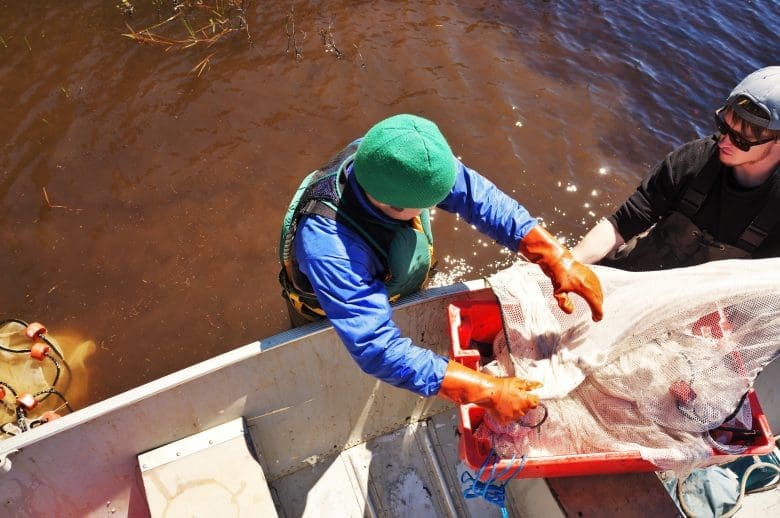Physical Limnology
Physical limnology is the study of the physical characteristics of aquatic ecosystems and forms the core of aquatic research.
These data are central to understanding and investigating aquatic ecosystems; everything living in a lake is dependent upon the right balance of many different aspects of physical limnology, like water temperature, dissolved oxygen, light attenuation and even water colour. By analyzing these data along with water chemistry, hydrology and meteorology, we are able to get a complete picture of aquatic ecosystems and how they change over time. All of these data combine to give us insight into trends in the biology of aquatic ecosystems.
At IISD-ELA, we collect these data using precise and accurate equipment and techniques in order to ensure we are producing the highest quality data possible. Data we collect are part of a long-term dataset that we use as controls for experimental manipulations and to investigate the effects of a changing climate.

Basic limnological parameters are monitored on all long-term ecological research (LTER) lakes, as well as a variety of experimental lakes, throughout the year. Data are collected regularly throughout the open-water season and twice over the winter for select lakes.
During each field season, high-resolution profiles and water chemistry samples (as profiles or integrated samples) are collected in select lakes on a bi-weekly or monthly schedule. Data collected in high-resolution profiles include the following:
- Water temperature
- Dissolved oxygen
- Conductivity
- Photosynthetically active radiation (and resulting light attenuation coefficients)
- Chlorophyll (fluorometer)
Field observation data are also collected, including:
- Secchi depth
- Water colour
- Epilimnion depth
- Thermocline depth
- Wind speed and direction
- Surface water temperature (logged continuously throughout the season)
Bathymetry data exist for many lakes, as well as annual ice thickness and ice on/ice off dates for Lake 239.